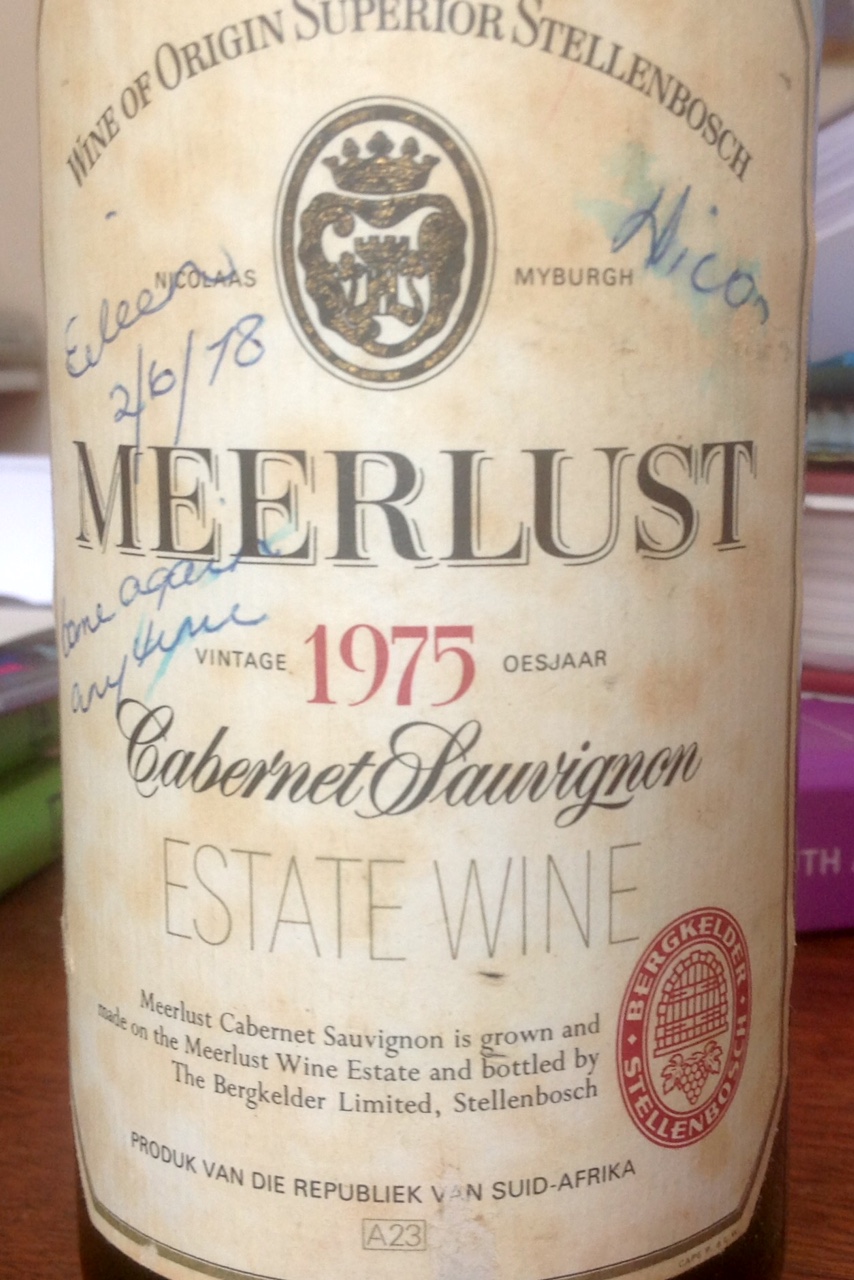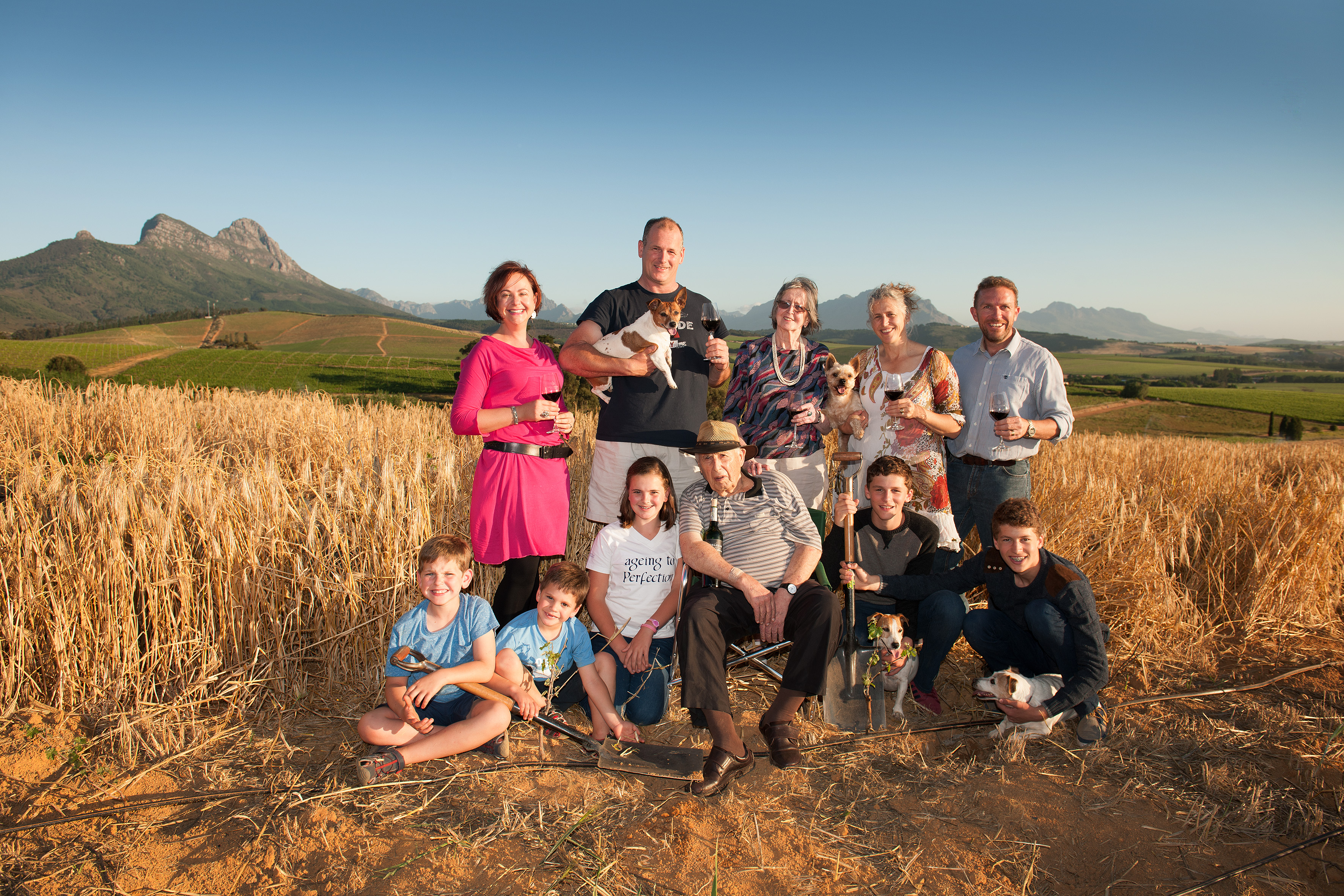A quartet of pioneers
Two recent events – one an anniversary, the other a re-launch – brought back memories of South Africa’s early days with red blends based on Bordeaux varieties, Cabernet Sauvignon in particular. The first, Welgemeend Estate 1979, incorporated all five of those varieties.
The anniversary was at Meerlust, the Stellenbosch farm that’s been in the Myburgh family for nine generations. It was Nico Myburgh, father of current custodian Hannes, who planned a wine in the style of a great Bordeaux but until young vineyards of Merlot and Cabernet Franc came into bearing he released a straight Cabernet, the first in 1975.

It was the 40th anniversary of that maiden vintage a small group of us recently celebrated.
After showing current vintages of the range, including the Platter five-star Rubicon 2010, cellarmaster Chris Williams treated us to a look back in time. Rubicon was the wine, Cabernet-based with Merlot and Cabernet Franc, that Myburgh and his then winemaker, Giorgio Dalla Cia, had been working on since the late 1970s, the first commercial bottling being in 1980. Well, perhaps that blend requires a little adjustment. We were discussing these early blends while tasting older vintages: a wonderful 1995 with its modest 13% alcohol, rich complex fruit and firm tannins. ‘Still years to go – this bottle at least’ I wrote, a little unnecessarily; and a sadly less than stellar, drying 1982, a surprise in such a super vintage. I mentioned that from the maiden 1981 vintage until 1989 Kanonkop’s Paul Sauer Fleur, as it was initially known, included a tiny portion of Souzão due to it being a field blend. Williams laughed, admitting that from the maiden 1980 until as recently as 2004, Rubicon contained a splash of Carignan from a couple of rows of vines on the farm.
Dipping back into the October-November 2004 issue of Grape (the publication which represented South Africa’s independent wine viewpoint and of which I was associate editor – it ceased publishing in 2005 but continues on the internet under Tim James’ byline), wherein we reported on a vertical of Rubicon from 1980 to 2000, it’s interesting that the 1995 was well liked then: ‘1995 ****, which was slowest to develop and seemed quite dumb in the glass… There was a general feeling that this was the ‘sleeper’ of the tasting, the wine most worth watching over the next decade.’ Two decades, according to that most recent bottle!
Strangely, 1982 was also below par: ‘1982 *** Disappointing bottle for a famous vintage but still ‘elegant and well balanced’ (Cathy van Zyl)... ‘little on the nose, firm acid, very dry finish (Dave Hughes)’.
The blend in those days was roughly 70% Cabernet, 20% Merlot and 10% Cabernet Franc (and, supposedly, that drop of Carignan). Since 2008, a little Petit Verdot (±2%) has been included.
Pre-Rubicon wines Williams opened were Cabernet Sauvignons from 1978 – still sweet fruited if lacking real depth – and the anniversary wine, 1975, which inspired my ‘Elegant, lovely depth of warm, ripe fruit and well-worn leather. Layers of flavour. Balanced support.’ By this age, one isn’t always guaranteed a good bottle; this one, happily, was.
Overgaauw Tria Corda completed a quartet of these nascent Bordeaux-style blends. Originally a blend of Cabernet and Merlot with a little Cinsaut, after the first two vintages (1979 and 1980) the Cinsaut was dropped. The current 2013, which adds Cabernet Franc to Cabernet and Merlot, has classic-style restraint with evolution potential, finesse and savoury vinosity.
While the above combine other Bordeaux varieties with Cabernet, Delheim and the Sperling family took a different approach with their proprietary flagship, the Grand Reserve. Introduced with the 1981 vintage and made by then cellarmaster Kevin Arnold, the idea was to produce the best wine from each year. If that happened to be 100% Cabernet, then that’s what would be bottled, as it was in 2013. The launch of this vintage not only celebrated current winemaker Reg Holder’s first Grand Reserve but also the wine’s return to the range after a four year absence due to various viticultural problems.
 Delheim's Sperling Family
Delheim's Sperling Family
In the mid 1970s, it was Spatz Sperling’s far-sightedness that led him to buy 80 hectares of prime red-wine land on Klapmutskop (Kanonkop is just across the road) – he recognised growing consumer interest in red wines but also believed their Simonsberg farm was too cool to ripen red varieties. Cabernet, predominantly grown as bush vines and today aged between 15 and 37 years, thrives in these deep, red soils, as do Merlot and Cabernet Franc. Explaining the old Cabernet bush vines, viticulturist Etienne Terblanche mentioned: “They are well balanced as Cabernet Sauvignon is an upright grower, giving good sunlight penetration in the canopy.”
Guests were treated to a tasting of nine vintages, covering those made by each of the five cellarmasters. First poured was Kevin Arnold’s 1984, a blend of 88% Cabernet and 12%Cabernet Franc. Not just because of its age was it a general favourite – there was complexity, balance and length; this from a wine with 12.9% alcohol which had spent 13 months in 100% new French barriques. Acknowledged as an excellent red wine vintage, 1984 produced wines that have aged well, something borne out by high ratings for the Welgemeend, Meerlust Rubicon and Overgaauw Tria Corda at those Grape vertical tastings.
Other vintages hadn’t aged quite as well: 1987, Arnold’s last, Philip Costandius’s 1991 and 1999, and Brenda van Niekerk’s 2007; but Conrad Vlok’s 2001 Cabernet with 2% Merlot, although in a bigger, more modern style (its 14.2% alcohol the highest of the flight), was balanced, the fruit still very much alive. Brenda van Niekerk’s 2006, the same blend as the 2001, was also good: plush with sweet fruit and fine tannins.
Holder’s 2013 reflects a return to a purer, less assertive style. Oaking, tuned down to just 31% new in 300-litre French oak barrels, results in a wine full of fragrance from perfectly ripe fruit. There’s vibrancy, suppleness and an unobtrusive, yet supportive structure that allows for current enjoyment, Holder’s goal, but also plenty of potential.
Under the new, younger generation, these pioneering Bordeaux-style blends are ensuring they maintain their enviable status and reputation.
– Angela Lloyd